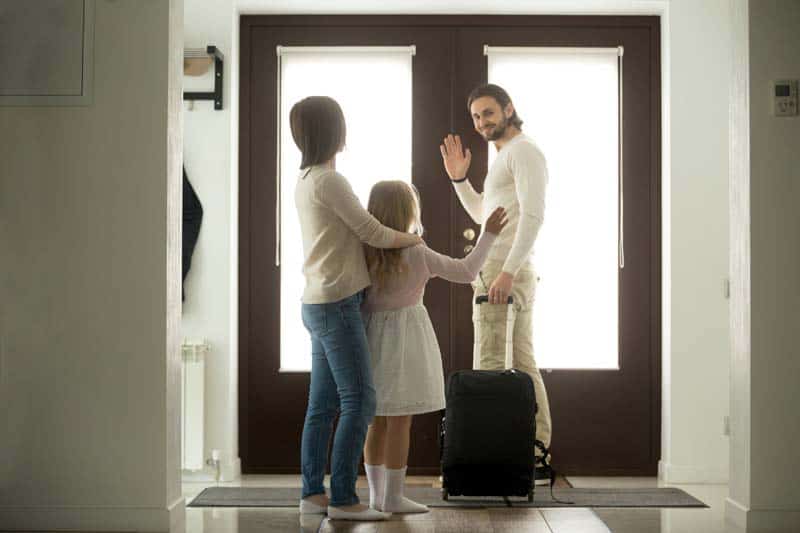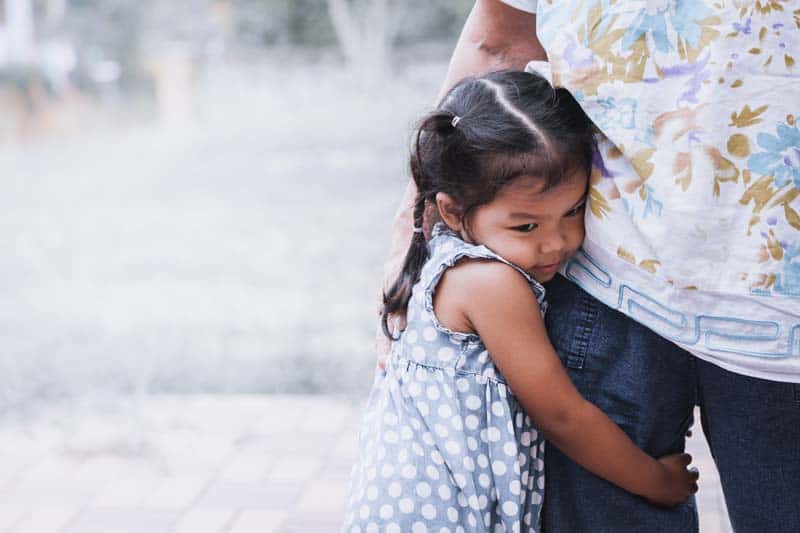Ask the Doctor: How to Handle Separation Anxiety in Children
Does your baby or toddler only want you and always cry when you leave? Though this can be hard on parents, it’s a very normal part of development in many kids. Normalizing it can help YOU navigate it.
Why does separation anxiety happen?
In babies, it has to do with object permanence. As early as 4 months, but usually by 9 months, a baby understands when something rolls under the couch it still exists. Similarly, when you leave a room, they still know you exist. Before that, it’s almost “out of sight, out of mind.”
Beginning at 15 months, toddlers can re-enter separation anxiety phases (or begin them for the first time). These periods are going to be more pronounced if your child is hungry, sleepy or sick—which is why we love routines! Toddlers LOVE normalcy and are less likely to panic with separation when caregivers stick to a routine. Inconsistent schedules confuse the toddler brain.
What does separation anxiety look like?
- Your baby cries hysterically when you put them down.
- You put them down, and they raise their arms to be picked up.
- Your child screams when you leave a room.
- Your older school-aged child has difficulty at school drop offs.
How to handle this healthy developmental phase:
Remember this is NORMAL. They love you! They know you’re their caretaker. Some children have it more intense than others, but don’t be discouraged. These are phases, and for some children it can last longer or shorter or not happen at all. You’re not damaging your child if they have separation anxiety (a common concern I hear from parents), but we do want to help you create separation which is important for them as you may need to leave for work, errands or “you” time.
STAY CALM WHEN THEY MELT DOWN. It’s okay for you to be sad seeing your child react negatively to a meltdown but recognize that they are also looking at how you respond. If you are loving and stay positive, they will understand to do the same with separation in time.
BE CONSISTENT WITH YOUR GOODBYE ROUTINE or whatever behavior routine you have. Give a kiss, say “I’ll see you soon,” and go out the door. Don’t be pulled back in because they’re crying.
AVOID SNEAKING OUT. We want resilience for the long run. Sneaking out isn’t what we normally do, and we want them to see us leave and know we will return. Give them attention, hugs, kisses—however you would normally want to say goodbye to them—and then leave without sneaking out for resiliency.
SCHEDULES HELP. A baby or toddler who is overtired or hungry is going to break down more.
If you want a more gradual approach, PRACTICE BEING APART FOR SHORT TIMES AND BUILD UP. This can work well if your child has never seen anyone else and is clingier. Alternatively, you can go straight into it but use the principles already mentioned!
PRACTICE WITH PLAY DATES AND OTHER PEOPLE. For children who have never been with other caregivers or children, warming them up with play dates with you around or visits to grandma with you there can ease them in.
AVOID DISCUSSING LENGTHS OF TIME. When discussing your return, avoid using time and say, “I’ll be back after nap time or snack time.” Young children don’t understand time. If you go on a business trip, say it as sleeps. “Mommy will come back after 4 sleeps.”

When to be concerned about separation anxiety
This phase can last anywhere from a few days to a few weeks and reoccur through various parts of their childhood. If your child’s unwillingness to separate is causing meal refusals at school or behavior issues at school or daycare, or if you are concerned about other aspects of development, speak to your pediatrician or another developmental specialist.
Most Important Takeaways
Control your emotions and be patient with this. It can be exhausting, but don’t fall into the cycle of frustration. Children very much model our reactions to situations. If you get flustered when you leave, they will sense this as abnormal, and the phase will last longer.
The person taking care of the child must be patient when you leave and understand it is NORMAL for you to leave. They should be capable of redirecting children to other activities and empathizing with their emotions by saying, “I see you’re upset that mommy left, but she will be back. Let’s go play with your blocks.” THEY MUST BE PATIENT and their reaction matters as well.
Last, but probably most importantly: Normalize this phase and remember, it does get better!
Presented by Pediatric Associates. | Originally published in the September 2022 issue of Tampa Bay Parenting Magazine.


